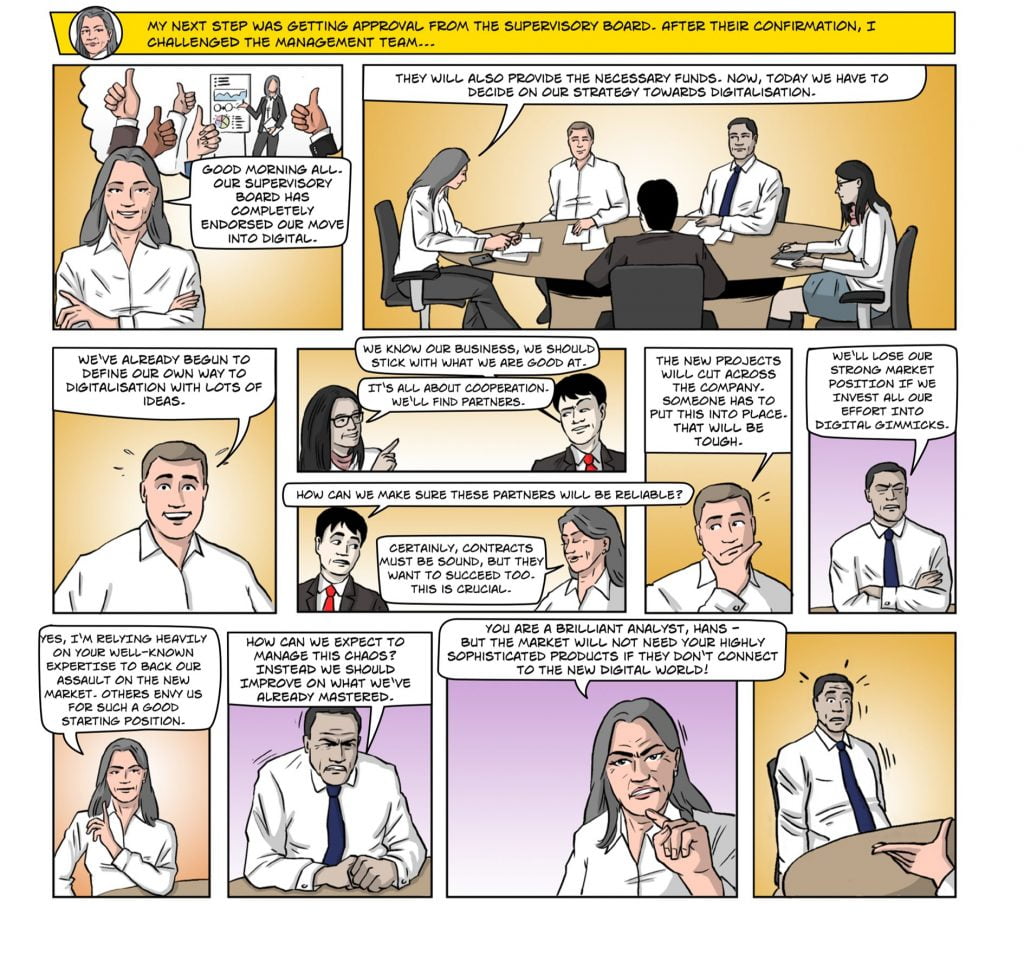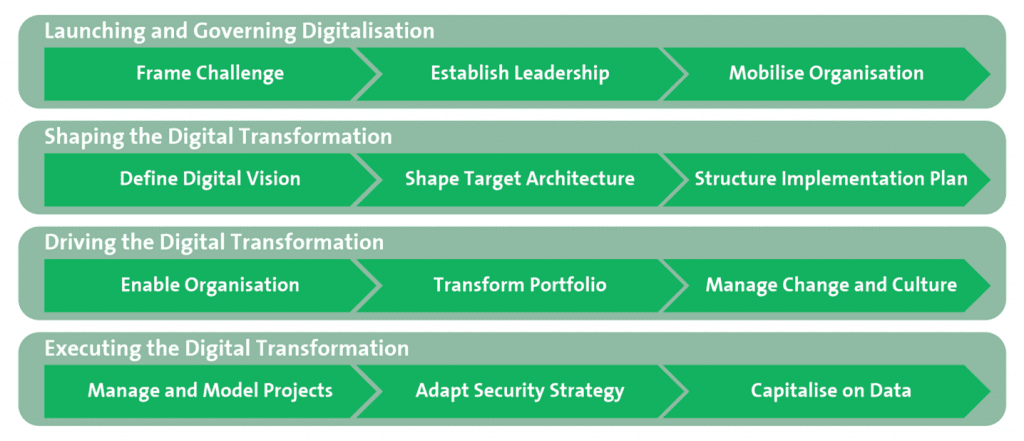The first two parts of this book explored the promises of digitalisation as well as the strong necessity for enterprises to meet this challenge and act accordingly.
Now assume that the top management of the enterprise has developed a thorough understanding of the merits of digitalisation in their business context, has a sound high-level business idea as to which direction digitalisation should be taking and has decided to embark on a digitalisation initiative. As we have seen, such an undertaking typically requires nothing less than the substantial adaptation and sometimes the comprehensive transformation of the enterprise’s business model.[1]
We therefore suggest that enterprises apply a comprehensive framework suitable for this undertaking, as outlined in Parts 3 and 4 of this book.
Many enterprises that have launched a digitalisation initiative too quickly face serious difficulties and even resistance to its execution. What are the reasons for these problems? From the start, one must be aware that digital transformation threatens the current operation of the enterprise, which is still required to function properly for its short-term survival despite all the promises and opportunities of the new digital world. The organisation as a whole will seek to protect the status quo from the influence of comprehensive change, as long as there is no common understanding of how the transition will be achieved successfully.
Launching any large change initiative is likely to lead to a conflict between strategic priorities (the quest to become digital) and the operational priorities that assure the continuity of the enterprise.
Digitalisation will, in most cases, require cross-departmental, cross-functional and cross-regional cooperation. It will break up historic barriers of operation and trigger the associated difficulties. For example, digitalisation will typically require and trigger a more holistic usage of data across the enterprise, a more democratic access to data and empowerment of employees and customers in unprecedented ways. Historically grown local data fiefdoms will break down.
From the outset, such a comprehensive transformation initiative considerably increases the risk profile of the company. This relates to the risk of executing the initiative properly as well as the additional operational risk due to, for example, the diversion of funds, talent and management focus. These new risks can and must be managed carefully during the transition, but are not helpful in regard to overcoming the organisation’s resistance. Appropriate change and project risk management will be necessary to deal with such resistance. Last, but not least, massive change will trigger personal resistance, more so when individual incentives and goals do not adequately incorporate the enterprise’s new digital targets.
Such difficulties can be experienced in any large-scale transformation of the enterprise. It becomes self-evident that substantial care and change management are required to make the digitalisation initiative successful. The necessary change management has to start at the top and permeate the whole company.
The organisation will have two distinct domains:[2] the ‘blue’ robust domain that reliably executes the existing business model, and the ‘red’ dynamic domain that drives forward the shaping of the new target state and executes the transformation towards it. The enterprise must be aware of the interplay and conflicts between these two domains and must carefully manage them.
A different scenario arises when external digitalisation successes in the enterprise’s industry lead to a strong competitive threat and a corresponding ‘burning platform’ for the enterprise. Change still must and will be comprehensive, but the direction of change management will be different and sometimes easier to follow.
Digitalisation requires a layered approach.
The highest governing bodies of the enterprise, the Board of Directors, the CEO and the Executive Board, must jointly launch and govern the digitalisation initiative. The CEO should create the role of Chief Digital Officer (CDO), which bundles the responsibilities together to shape digitalisation’s target state and drives the transformation forward. The CDO must combine functions and teams to shape the new business model and the path to it, as well as drive forward the transformation agenda in the organisation. The transformation itself will be executed and delivered by the organisation.
Finally, the organisation and its management must be prepared to retain focus on the digitalisation programme over a lengthy period of time.
Strong leadership will be necessary to advance the digitalisation agenda over years.
Depending on the future pace of technological developments, substantial change to the business model might never stop. Change becomes normality.
_____
[1] Dörner, K., Meffer, J.: ‘Nine questions to help you get your digital transformation right’, McKinsey, 2015.
[2] Wohland, G.: ‘Denkwerkzeuge – Was das ist und wie sie benutzt werden’, dynamikrobust.com, 2016.






